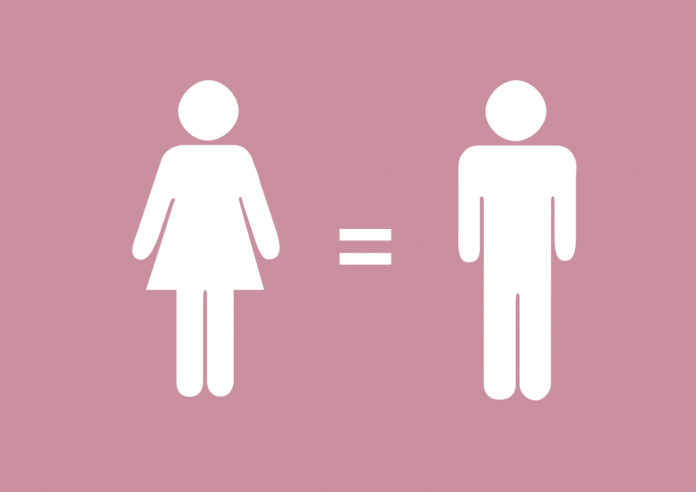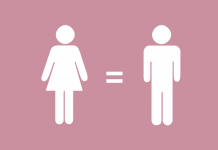This article is written by Anusha Misra from NALSAR University of Law. This article looks into gender equality in public administration and its importance.
Table of Contents
Introduction
The operations of the government have a considerable impact on daily living. They dictate how governments implement political and economic decisions, as well as how money is distributed and spent. As a result, for inclusive and gender-responsive public administration systems, equal participation of men and women, particularly at decision-making levels, is an essential condition. Gender equality, on the other hand, has not always been a guiding factor in public sector changes. Closing gender gaps in public administration is critical for inclusive development and democratic governance, as well as restoring trust in public institutions and improving the long-term viability and responsiveness of public policies, all of which are now prerequisites for achieving the global Agenda 2030. UNDP launched the global Gender Equality in Public Administration (GEPA) initiative in 2013, with the goals of:
- Promoting women’s empowerment and increasing their participation and leadership in the executive branches of government; and
- Contributing to up-to-date evidence of gender equality in public administration to aid informed policy and decision-making.
The GEPA initiative also intends to create national and international tracking tools for gender equality in government.
Women are underrepresented in decision-making positions in government, which tends to reinforce gender-biased policies, practices, and attitudes. In addition, there is a crucial shortage of data needed to advocate for change, establish policy, and track progress toward gender equality goals. To build a global tracking method for women in public administration, these data gaps must be filled.
Background
Governments unanimously endorsed the 2030 Sustainable Development Agenda in 2015, which recognised the role of gender equality and inclusive public administration and institutions in achieving more peaceful, prosperous, equal, and sustainable societies through Goal 16 on “promoting just, peaceful, and inclusive societies” and Goal 5 on “ensuring gender equality and women’s empowerment.”
The aggregate state-funded machinery, comprising agencies, policies, and services, in charge of the management and implementation of government laws, rules, and decisions is referred to as public administration. It enables governments to carry out their national goals and programmes, and it is critical for long-term growth. Many countries’ public institutions remain patriarchal and male-dominated, promoting negative and occasionally violent attitudes and practices. Despite the fact that there is no worldwide baseline on women’s engagement in public administration, UNDP research demonstrates that women are under-represented in leadership and decision-making positions. Women make up 45 percent of public administration on average, according to available data, however, there is wide diversity in women’s engagement between countries, ranging from 3 percent to 77 percent. The OECD countries have the highest average percentage of women in public administration (55.1%), while the Arab States have the lowest (35.9 percent ).
When it comes to the percentage of women in decision-making positions in government, Latin America and the Caribbean (43.4%) have the greatest average share, while Africa has the lowest (25.1 percent ). Furthermore, only 20% of countries have achieved parity (50%) in the proportion of women in public administration decision-making positions. It is not only the moral thing to do, but it is also the most productive, to promote diversity, which includes equal access for women to leadership positions. Female engagement in public administration and decision-making roles is positively connected with economic development and gender equality in society, according to a recent UNDP and McKinsey study. It also implies that women’s equal participation and leadership contribute to a more effective and efficient government. Another recent analysis from the Wilson Center confirms these findings, concluding that “where there are more women in power, there is better governance, and where there is good governance, there are more women in power.”
The GEPA Initiative
The backbone of government and the principal instrument through which national policies and programmes are implemented is public administration. In an ideal world, public administration is guided by principles of fairness, accountability, justice, equality, and nondiscrimination, and the civil service should serve as a model of equality and leadership, including in decision-making. However, this is not currently the case globally, and despite the fact that the internationally agreed-upon aim of a minimum of 30% women in leadership roles applies equally to public administration and politics, women continue to be underrepresented in decision-making in government.
In response to these challenges, UNDP launched the Global Initiative for Gender Equality in Public Administration (GEPA), which has two main objectives:
Supporting women’s empowerment and expanding participation and leadership in the executive branch of government; and
Contributing to the availability of current information on gender equality in government, as well as evidence and analysis, in order to promote informed policy and decision-making.
Gender norms and the development of government administration
When it comes to the role of gender in government, there are often two competing opinions, one focused on efficiency and objectivity (“masculine”) and the other on problems of social justice (“feminine” approach). Prior to World War I, both ideas were used in a harmonic manner, with women and men working together to “highlight the ideals of classical pragmatism.” However, after the onset of the war, there was a change in American governmental administration. As the public administration system became more reliant on male-dominated bodies, the system became more tied to the efficient/objective approach.
Sociology, on the other hand, continued to promote social justice by focusing on “specialist knowledge based on the value-neutral search of abstract generalisations about human relations.” Women were relegated to “more congenial professions such as social work” as a result of this divide, while men remained leaders in finance and other scientifically-driven organisations.
Lessons learned from women’s participation and decision-making in other areas of public life and the private sector
Women’s growing participation in decision-making roles in public life has borne some dividends after decades of advocacy. Global attention, development assistance, donor backing, national lobbying, and other activities have all aided advancements in women’s political leadership. The Women in Politics 2012 report charted the progress of women’s political participation around the world, revealing that the number of elected female heads of state and government increased from eight in 2005 to 17 in 2012, with the number of female ministers rising from 14.2% in 2005 to 16.7% in 2012. The Scandinavian countries have the largest percentage of female ministers (48.4%), followed by the Americas (21.4%) and Sub-Saharan Africa (20.4%). Nonetheless, the Interparliamentary Union (IPU) claims that even if the improved 2013 rate of increase in the global average of female members of parliament (1.5 percent) continues, the global average of women members of parliament will continue to decline.
Gender disparities persist in the private sector, both in developed and developing nations, at decision-making levels. Despite advancements in education and labour force participation, significant disparities in professional advancement persist. In OECD countries, women make up less than a third of senior management positions, and only one woman out of every ten men makes it to the boardroom. Recently, persuasive arguments have been made in favour of increasing the number of women on corporate boards and in executive roles in the private sector. The problem of women’s leadership in the private sector is gaining traction, thanks in part to a growing body of studies investigating the link between gender balance and financial performance. One significant argument is that, on average, if female labour force participation rates converged with male labour force participation rates by 2030 in OECD countries, GDP would increase by 12%. (GDP).
Main barriers to women’s equal participation in public administration
It is apparent that governments around the world have yet to fully utilise the abilities and potential of women. Women must be able to enter and develop to leadership positions at all levels and in all sectors on an equal footing with men, if public administration is to be representative of society and inclusive of women. A growing proportion of women aspire to leadership on the same terms as men and have made the same decisions as men, but they continue to face challenges. 33 Increased representation in public administration, particularly in decision-making positions, is not always guaranteed, even in nations where women have equal access to education. Women’s under-representation in decision-making roles is frequently explained by misconceptions about women’s professional choices or a lack of expertise. The impact of systemic gender-based discrimination is not taken into account in these popular assumptions.
There is no doubt that work-life balance considerations play an important role in women’s career decisions, and are also increasingly becoming a concern for some men. Individual capacities, competencies, and choices also play a role in women’s and men’s career paths, as well as their willingness and ability to take on responsibilities in both the private and professional spheres, but these are influenced by broader, systemic socio-cultural gender-based constraints and constructs for women. Despite varied findings on women’s and men’s job aims and expectations, gender differences arise. Furthermore, female CEOs were more than twice as likely as their male counterparts to postpone marriage or child-rearing in order to pursue a profession, with 12 percent of women opting not to have children compared to only 1% of males. While continuous efforts to promote women’s and girls’ access to education are a clear basic measure for advancing women’s equal involvement and decision-making, particularly in public administration, other issues must also be considered.
Despite the fact that hurdles and challenges differ by location, country, socio-cultural setting, and political context, several common obstacles to women’s equal participation in decision-making roles have been found. These impediments and challenges, which are discussed below, exist both inside and outside of government and are interconnected.
Gaps in adoption and implementation of enabling legal and policy frameworks
The first step toward gender equality and parity is to lay a solid legislative and policy foundation. These must comply with international and regional norms and include explicit references to gender equality in government, including in decision-making positions. In particular, the Convention on the Elimination of All Forms of Discrimination Against Women (CEDAW), which is binding on all state parties, demands the systematic elimination of all forms of overt discrimination and the implementation of special measures to address historical imbalances. Discrimination is defined in Article 1 of CEDAW as any distinction, exclusion, or restriction made on the basis of sex with the effect or purpose of impeding or nullifying the recognition, enjoyment, or exercise by women, irrespective of their marital status, on a basis of equality of men and women, of human rights and fundamental freedoms in the political, economic, social, cultural, civil, or any other field.
Discriminatory and unsupportive organizational cultures within public administration
Gendered norms influence organisational cultures, which are often unarticulated, unwritten, and often unconscious, making them difficult to recognise and modify. Socio-cultural norms can impact gender roles and relationships in either a positive or negative way, as well as feed or deconstruct negative gender stereotypes. In some nations, it is often assumed that those who are prepared to commit and take on growing duties would be able to maintain a full-time job for the rest of their lives. A ‘business lady’ is typically associated with a woman who has decided not to have children, is a ‘poor mother,’ or is ‘too assertive and macho.’
Gaps in data and analysis
There is a scarcity of data and analysis on the existence and efficacy of policies that promote women’s equal involvement and decision-making in government on a local, national, regional, and global level. In most nations, disaggregated data by gender and age is not readily available, and what is available (typically raw data) is rarely consistently analysed. The lack of comprehensive and comparable data on gender balance at the organisational level makes decision-making difficult and oversight harder.
Weak gender mainstreaming in public administration reforms
Through supportive legislation and a modern and acceptable working culture, public administration reform programmes provide crucial entry points to promote gender equality. Gender concerns, specifically equal participation and sex in decision-making roles, are not addressed in public administration reform programmes, resulting in powerful opportunities to create a truly representative and responsive public administration capable of meeting the needs of a country’s population.
Conclusion
In public administration, gender and diversity are essential themes. They remind the field to embrace diversity and recognise its impact on policies, initiatives, and outcomes. Divergent viewpoints on, and interpretations of, public service have gained popularity in recent decades as a result of increased awareness of the differences that exist. This is imperative if the discipline is to strive for the normative ideal of democratic governance.
References
- https://www.undp.org/publications/global-report-gender-equality-public-administration-gepa
- https://www.globalgovernmentforum.com/gender-equality-in-public-administration-what-happens-now/
LawSikho has created a telegram group for exchanging legal knowledge, referrals, and various opportunities. You can click on this link and join:
 Serato DJ Crack 2025Serato DJ PRO Crack
Serato DJ Crack 2025Serato DJ PRO Crack










 Allow notifications
Allow notifications



